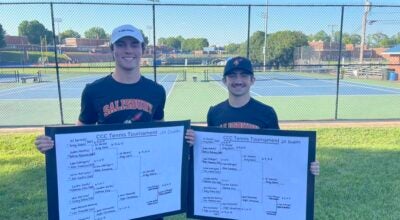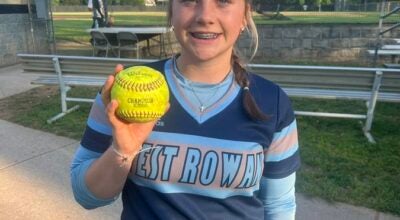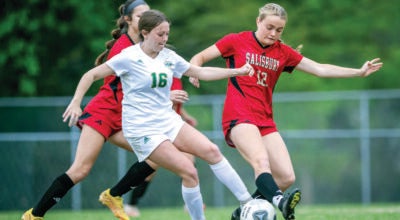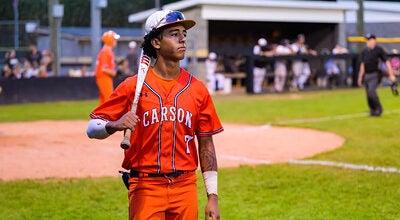Al Wood: Former Tar Heel still shooting straight
Published 12:08 am Wednesday, August 3, 2016
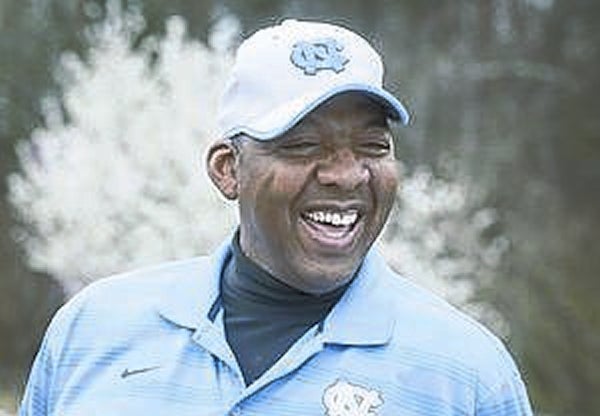
- Al Wood
By Mike London
mike.london@salisburypost.com
SALISBURY — Al Wood turned 58 in June, but he’s still shooting straight.
A recovering alcoholic (sober for 28 years) and now a minister, Wood was in Salisbury on Tuesday, lending a passionate voice to the North Carolina Alcoholic Beverage Control Commission’s Talk it Out program.
Wood is an authority on the negative impact of drinking. A coroner knocked on the door of his childhood home at 4 a.m.
Wood’s mother, who had been drinking, had stabbed a man to death. Wood’s mother woke up in jail the next morning and spent his ball-playing years in prison. She was allowed to attend one of her son’s UNC home games his senior season.
“I didn’t have education, didn’t have enough knowledge, didn’t understand a lot of things about alcohol that I do now,” Wood said. “When you become educated, you make better decisions.”
Wood delivered his message during a meeting at the Wallace Educational Forum and he also chatted with fans and media prior to and after that meeting.
Wood is remembered by many University of North Carolina basketball fans as the 6-foot-6 guy who was the bridge (1978-81) between two more-famous 6-foot-6 guys — Walter Davis and Michael Jordan. Wood wasn’t the NBA player the other two were, but he may have been the best shooter ever to wear the Carolina blue. The Tar Heels passed patiently and screened relentlessly to get open 17-footers for Wood, and he seemed to make all of them.
Wood didn’t get many layups or dunks, but he still shot a deadly 56 percent from the field in his four seasons in Chapel Hill. Wood’s college career came before the 3-point line was introduced, but he was the master of that lost art — the mid-range jumper.
After his grandmother adopted him and raised Wood in Gray, Ga., near Macon, he came by his shooting skill on his own.
By the time he was in his teens, Wood had a homemade goal erected and he owned a basketball purchased from summer jobs.
“We used a piece of plywood for a backboard and nailed it on a pine tree in a vacant lot across the street,” Wood said. “I shot all day on that goal, hour after hour.”
His form was perfect. High leap, elbow tucked, fingers always following through. He became quite a player at Jones County High School.
In 1976, the summer before his senior year, Wood watched the gold-medal winning U.S. Olympic team on television, saw a team coached by UNC’s Dean Smith and assistant Bill Guthridge. Their squad included four UNC players — Davis, Phil Ford, Mitch Kupchak and Tommy LaGarde.
“I didn’t know a lot about the Olympics,” Wood said. “I didn’t know Dean Smith didn’t coach the Olympics every year. But I knew I liked how that team played. I especially liked the way Phil Ford played. I knew that’s where I wanted to go to school.”
Recruiting was different, much simpler then.
Wood had never played in an AAU game, had never been to a camp. But he wanted to go to Carolina, and his high school coach wrote a letter to UNC requesting that they to come watch Wood play.
“I’m sure they got all kinds of letters from kids and high school coaches every day,” Wood said. “But I was lucky. Coach Smith sent (assistant) Eddie Fogler to watch me. Coach Fogler came on a Tuesday night, and I scored 58 points. Coach Smith was there to watch me that Friday. Things worked out. Walter Davis was graduating, a spot was opening up, and I was one of those diamonds in the rough.”
The rest is history.
As a prep senior, Wood averaged averaged 33 points and 19 rebounds.
Next came a decent freshman year (9.1 points per game) in which he had to make adjustments to UNC’s social life as well as smarter defenses, which forced him off his favorite spots and made him put the ball on the floor.
He got better because of teammates Dudley Bradley, a supreme defender, and Mike O’Koren, who had a skilled offensive game.
“I’d go at it with those two,” Wood said. “Every pickup game and every practice. Every time we laced them up.”
Wood was All-ACC his last three seasons, seasons in which he averaged 17.8, 19.0 and 18.1 points per game. He was a second team All-American as a senior.
He made the 1980 Olympic team, a dream, and starred in exhibitions against NBA all-stars, but that was the year the U.S. boycotted the Moscow games, so Wood doesn’t own a gold medal.
He gets asked about one college game over and over.
It was a national semifinal in 1981 against a powerful Virginia team led by towering Ralph Sampson and Wood’s small-forward rival Jeff Lamp, and it was different from every other game Wood ever played for UNC. He was the ultimate system player, but this was the one time in which he got so hot that he and his teammates abandoned their system.
Wood scored 39 points, breaking the record for a semifinal. He made nine of 10 shots as the Tar Heels took charge in the second half. At one juncture, he scored 13 straight UNC points. That didn’t happen for Dean Smith-coached teams.
Wood, who had 10 rebounds, took over so much that Smith actually got up to take him out, but assistant Roy Williams had seen Wood go crazy in pickup games before. He grabbed Smith’s arm, shook his head, and they agreed to just let Wood go.
Virginia tried everything, lots of different defenders, even a box-and-one. That was noteworthy because Carolina also had James Worthy and Sam Perkins on the floor.
Wood would’ve scored more than 39, but he dislocated his left shoulder scrambling for a loose ball. Still, it went down as one of the storied performances in UNC history.
“I’ve been asked about that Virginia game at least a thousand times,” Wood said with a smile. “I could do no wrong that night. I just got in a zone, and my teammates kept looking for me. I played loose like I was in a pickup game. Everything was going in, and then the rim started looking like a big ol’ tub.”
UNC lost the 1981 championship game to Indiana despite 18 points by Wood, who played the best of the Tar Heels.
“I’ve kind of blocked that game out of my memory,” Wood said. “All I remember now is it was the day the President (Ronald Reagan) got shot.”
While he was the fourth pick in the NBA draft after his senior year, Wood’s NBA career was relatively short (six seasons) and quiet. He averaged 15.0 points a game for the Seattle SuperSonics in 1985-86, but there were no shooting sprees like he’d had in college.
“Injuries to my shoulder and labrum and bone spurs,” Wood said. “And I also had to deal with personal issues.”
He’d been introduced to alcohol, which became his biggest issue, as a college freshman.
“I’d never touched a drink until college, but then I’m 19, and everyone believed that the baddest dude was the one who drank the most,” Wood said.
It would be years before Wood would be able to deal with a drinking problem.
“You don’t like where you are and you really want to change, but you don’t know how to change,” Wood said.
He got back on track eventually. A call to Coach Smith, who was a father figure to him until his death, helped get him back.
Wood is the picture of prosperity now. His four children all graduated from UNC, and he still sports the Tar Heel colors at every speaking venture. he arrived in Salisbury in a pale blue golf shirt.
An ordained minister based in Fort Mill, S.C., Wood’s daily focus is on helping youth.
“The biggest thing for our kids’ future is getting them to read and comprehend what they read,” Wood said. “Education opens the door for all kinds of opportunities.”


